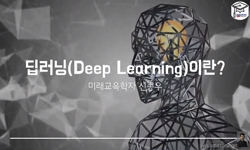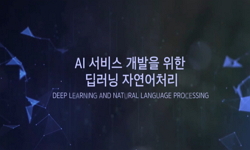Many modern portable devices, especially smartphones, are equipped with positioning functionality. The rapid growth in the use of such devices has allowed for the accumulation of a vast amount of positioning data. Combined with deep learning methods, ...
http://chineseinput.net/에서 pinyin(병음)방식으로 중국어를 변환할 수 있습니다.
변환된 중국어를 복사하여 사용하시면 됩니다.
- 中文 을 입력하시려면 zhongwen을 입력하시고 space를누르시면됩니다.
- 北京 을 입력하시려면 beijing을 입력하시고 space를 누르시면 됩니다.

Trajectory Pattern Construction and Next Location Prediction of Individual Human Mobility with Deep Learning Models
한글로보기https://www.riss.kr/link?id=A106949665
- 저자
- 발행기관
- 학술지명
- 권호사항
-
발행연도
2020
-
작성언어
English
- 주제어
-
등재정보
SCOPUS
-
자료형태
학술저널
-
수록면
52-65(14쪽)
- 제공처
-
0
상세조회 -
0
다운로드
부가정보
다국어 초록 (Multilingual Abstract)
Many modern portable devices, especially smartphones, are equipped with positioning functionality. The rapid growth in the use of such devices has allowed for the accumulation of a vast amount of positioning data. Combined with deep learning methods, these data may be used for many novel applications. Herein, a trajectory pattern tree generation method via deep learning is proposed. The convolutional neural network (CNN) and recurrent neural network (RNN) model of deep learning were applied for trajectory generation and prediction. Several volunteers provided their raw positioning data. The trajectory generation and prediction are for individual mobility patterns and were performed for every volunteer. We present the results obtained from seven volunteers. The preciseness of prediction can be measured both for CNN and RNN. Consequently, we can predict an individual’s location with 32.98% accuracy, and predict the top-five up to 69.22% for unit area size of 0.030 km².
목차 (Table of Contents)
- Abstract
- I. INTRODUCTION
- II. RELATED WORKS
- III. BACKGROUNDS
- IV. PREDICTION OF OBJECT’S TRAJECTORY AND CREATION OF TRAJECTORY PATTERN
- Abstract
- I. INTRODUCTION
- II. RELATED WORKS
- III. BACKGROUNDS
- IV. PREDICTION OF OBJECT’S TRAJECTORY AND CREATION OF TRAJECTORY PATTERN
- V. ACCURACY MEASUREMENT OF PREDICTED TRAJECTORY PATTERN
- VI. PREPARATION OF EXPERIMENT
- VII. RESULTS
- VII. CONCLUSIONS
- References
동일학술지(권/호) 다른 논문
-
Virtual Whole-Hand Grasping Feedback for Object Manipulation with a Two-Finger Haptic Interface
- 한국정보과학회
- Youngjin An
- 2020
- SCOPUS
-
Enhancement of Security and QoS in Wireless Medical Sensor Networks
- 한국정보과학회
- Sathya Duraisamy
- 2020
- SCOPUS
-
- 한국정보과학회
- Kihoon Jeon
- 2020
- SCOPUS





 DBpia
DBpia






